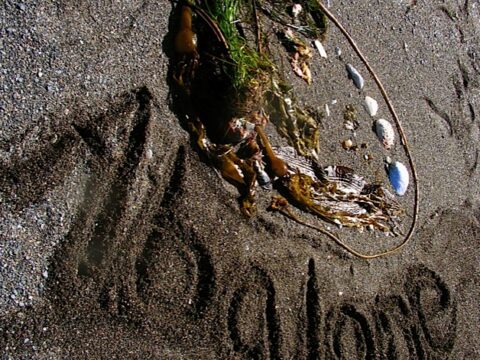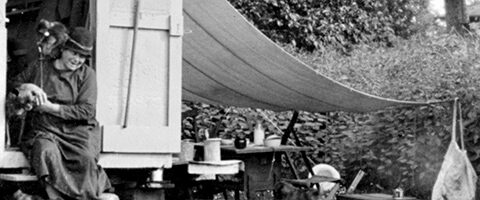Art in Nature
by Carol McDougallIn my work as an educator, I seek activities that connect students to nature by engaging in art. This playlist pulls nature inspired art from the learning portal, and also includes my own similar projects.

1In 1 playlists
This was made on Botanical Beach. Create your own by filling in the shape of a species using found objects in nature. Write the name of the species underneath and you, by doing so, have created awareness of its habitat. Choose a species at risk and you, and others, will better understand its importance. Don't forget to take a photograph to share!

Blue Band Hermit Crab
Look
2In 2 playlists
With all the choices for recording images these days, the art of illustration is still valued by scientific researchers. Explore the work of gifted biologist and illustrator Dr Hart.
View Pathway
1In 1 playlists
Split shot habitat art looks like underwater photography where both the ocean and above ocean habitats are shown. This pastel art project emphasizes the importance of the kelp forest, shoreline habitat of Northern Abalone. This video shows the artistic steps to participate.

5In 5 playlists
We're all in this together. An ecosystem is a natural community. When species disappear it can throw an entire system off balance, with far-reaching consequences for ecosytems, for the planet, and for us. What can we do about it?
View Pathway
1In 1 playlists
Create a coastal habitat using construction paper, tracing paper and recycled postcards and/or calendars. The background paper will become the sky and water. Another colour of paper is used for tearing out mountains and foreshore. Tracing paper is layered to create a 'mist' effect. Animals and plants are chosen to support the habitat.

5In 5 playlists
American botanist Mary Gibson Henry collected plants in northeastern BC in 1931. Her pioneering journey was recorded on film. Lucky for us, BC Archives has a copy.
View Pathway
1In 1 playlists
Animals like salmon and some birds rely on the stars to aid migration. Show this by creating a silhouette subject on watercolour paper in permanent ink. Add a constellation with a silver permanent pen. Wash your wet paper with watercolour paint and and sprinkle with salt while still wet. Ask people to consider the effects of light pollution.

2In 2 playlists
The mammal collection is as diverse as the mammals of BC. Mammal specimens at the museum are preserved, stored and made available for research.
View Pathway
1In 1 playlists
Chinese Brush style painting is an ancient style using simple ink strokes to represent nature. This style was adapted to use with watercolour paints. Following the three steps helps the painter notice the details of vertebrate amphibians while still creating an impressionist result. The Great Basin Spadefoot Toad is a species at risk.

Spotted Bat Illustration
Look
1In 1 playlists
Created especially for the Species at Risk project as an activity for summer camp participants. Watch what happens when artists inspire each other.

3In 3 playlists
Emily Carr is British Columbia’s most famous artist, but she was also a colourful woman who lived a life full of adventure. Learn about Emily’s love of animals and explore her life through some of the museum’s vast Emily Carr collection.
View Pathway
1In 1 playlists
We asked the Robert Bateman Centre Gallery staff what species they would save. We paired their answers in a video with thumbnail photos of Robert Bateman's art. When we spoke to Robert Bateman, he said his biggest concern is the gradual reduction of songbirds. We spoke about how migratory birds are affected by the loss of habitat.
